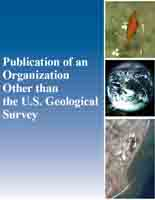Drill-bit metamorphism (DBM) is the process of thermal degradation of drilling fluid at the interface of the bit and rock due to the overheating of the bit. The heat generated by the drill when drilling into a rock formation promotes the generation of artificial hydrocarbon and non-hydrocarbon gas, changing the composition of the gas. The objective of this work is to recognize and evaluate artificial gases originating from DBM in wells targeting oil accumulations in pre-salt carbonates in the Santos Basin, Brazil. For the evaluation, chromatographic data from advanced mud gas equipment, drilling parameters, drill type, and lithology were used. The molar concentrations of gases and gas ratios (especially ethene/ethene+ethane and dryness) were analyzed, which identified the occurrence of DBM. DBM is most severe when wells penetrate igneous and carbonate rocks with diamond-impregnated drill bits. The rate of penetration, weight on bit, and rotation per minute were evaluated together with gas data but did not present good correlations to assist in identifying DBM. The depth intervals over which artificial gases formed during DBM are recognized should not be used to infer pay zones or predict the composition and properties of reservoir fluids because the gas composition is completely changed.


